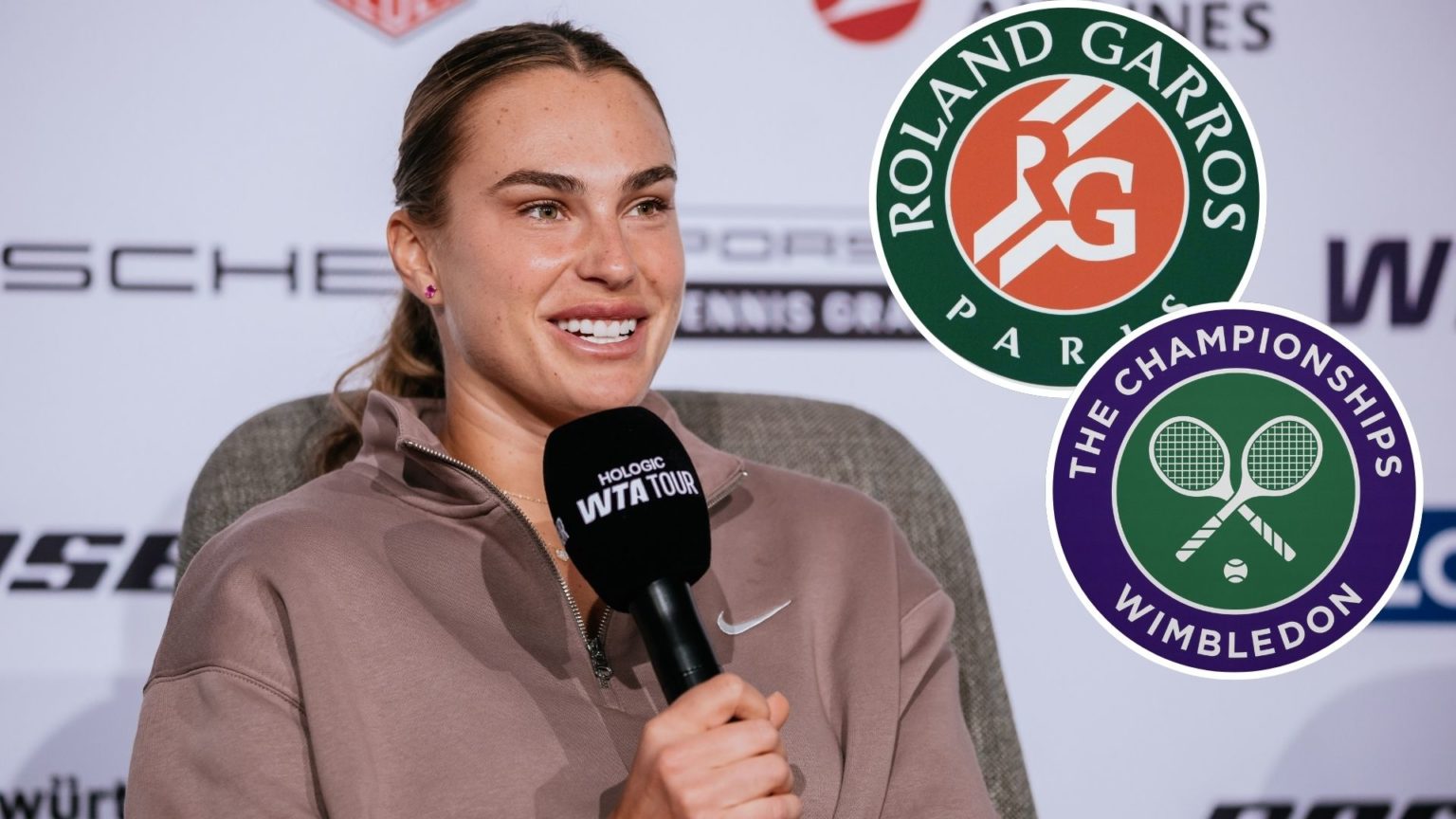
Aryna Sabalenka, the world No. 1 and reigning US Open champion, stands at a career crossroads as she embarks on the 2025 clay season at the Porsche Tennis Grand Prix in Stuttgart. With three Grand Slam titles—two Australian Opens (2023, 2024) and the 2024 US Open—under her belt, Sabalenka is two majors shy of a Career Grand Slam, missing only Roland Garros and Wimbledon. Ahead of her Stuttgart opener, the Belarusian powerhouse shared candid insights on which of these elusive titles she believes will be tougher to claim. “I think Wimbledon is going to be the hardest one,” she declared, sparking intrigue about her mindset as she navigates the contrasting demands of clay and grass. Her journey to conquer these surfaces is a compelling saga of ambition, resilience, and tactical evolution.
Sabalenka’s 2025 season has been a blend of brilliance and near-misses. After securing the Miami Open title in March, defeating Jessica Pegula 7-5, 6-2, she fell short in finals at the Australian Open and Indian Wells. “I think winning Australian Open was a better start for me in the previous years,” she admitted, reflecting on her failure to defend her Melbourne crown. Despite reaching more finals than in 2023 or 2024 at this stage, Sabalenka remains unsatisfied, driven by her hunger for Grand Slam glory. Her 18-1 major record in 2024, including a 15-match winning streak across Cincinnati and the US Open, underscores her dominance, yet Roland Garros and Wimbledon remain unconquered frontiers.
The Belarusian’s assessment of Wimbledon as the tougher challenge stems from her history and the surface’s unique demands. A two-time semifinalist at SW19 (2021, 2023), Sabalenka has never reached the final, and her 2024 withdrawal due to a shoulder injury was a bitter setback. “I was heartbroken to have to tell you all that I won’t be able to play The Championships this year,” she posted on social media, citing the injury that derailed her grass-court season. Wimbledon’s fast, low-bouncing grass demands precision and adaptability, challenging Sabalenka’s aggressive, power-driven game. Her blistering forehand, refined under coach Gavin MacMillan, and newfound drop shot—once a self-proclaimed weakness—have added versatility, but grass exposes any lapses in movement or touch. “Five years ago if someone will tell me I will finally learn how to do this shot, I’ll be like laughing,” she said of her drop shot, which now pressures opponents.
Roland Garros, by contrast, has seen Sabalenka come tantalizingly close. In 2023, she held a match point in her semifinal against Karolina Muchova but fell 7-6(5), 6-7(5), 7-5. “It was a really tough match,” she recalled, a sentiment echoed in her 2024 quarterfinal loss to Mirra Andreeva, where a stomach bug hindered her, ending a 23-set Grand Slam winning streak. Clay, with its slower pace and higher bounce, suits her powerful groundstrokes and topspin-heavy game, evidenced by her 50-22 tour-level clay record and two Madrid Open titles (2021, 2023). Yet, the grueling physicality of Roland Garros, where Iga Swiatek has won four titles, poses a formidable challenge. Sabalenka’s 8-4 head-to-head deficit against Swiatek, including a 6-3, 6-3 Cincinnati loss in 2024, highlights the Polish star’s clay-court supremacy.
Sabalenka’s Stuttgart campaign, where she’s a three-time finalist, is a critical springboard. Facing either Donna Vekic or Ekaterina Alexandrova next, she aims to leverage her 85% first-serve point win rate from Roland Garros 2024. Her 2024 season, marked by personal tragedy in Miami and illness in Paris, showcased her resilience. “I would say this year was definitely up and down, sometimes really downs,” she said, yet she finished with a 56-14 record. Her mental growth, praised by peers like Ons Jabeur, who noted her maturity in decision-making, is evident. “She’s a much better player… more mature on the court,” Jabeur said after Sabalenka’s 2024 US Open run.
As Sabalenka eyes Roland Garros and Wimbledon, her ambition is clear: to emulate legends like Serena Williams and Swiatek. “I always wanted to dominate the tour like Serena did, like Iga was able to do for so long,” she told reporters. Her 9-1 Grand Slam quarterfinal record and 44-37 mark against top-10 players signal her readiness, but Wimbledon’s slick grass may demand more finesse than Roland Garros’s gritty clay. With the French Open looming, followed by a tight transition to Wimbledon—a schedule Sabalenka has suggested needs tweaking for player recovery—her quest to complete the Grand Slam set is a high-stakes drama unfolding on the world’s biggest stages.
Leave a Reply